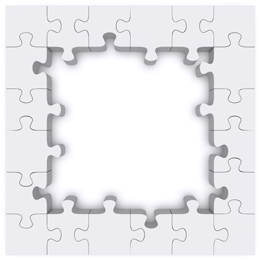Lesson 4
1. Lesson 4
1.5. Explore
Module 5: Rational Expressions
Explore

iStockphoto/Thinkstock
What strategies do you use when tackling difficult jigsaw puzzles? Do you begin by assembling the border? Do you collect certain pieces that have the same colour or that may be used to create distinct parts of the puzzle? These strategies and others can help to reduce a pile of random puzzle pieces into a beautiful picture.
In this lesson you will learn how to solve rational equations. Like your approach to a puzzle, you can use strategies to make unravelling the final picture—the solution—much easier.
A rational equation is an equation that contains rational expressions.
Examples of Rational Equations |
||
|
|
|
To solve a rational equation, you must isolate the unknown variable, just as you would to solve any other equation. Since you need to eliminate the denominators, there is an extra step in solving rational equations.
Retrieve your work from Discover. In Try This 1 you discovered that each of the three equations had the same root. This is because the three equations are equivalent. In other words, you can determine the answer to equation A by solving equation B or equation C.
Equation B and equation C were easier to solve because they did not contain rational expressions. Generally speaking, an equation is easier to solve when you don’t have to work with denominators.
In Discover you explored personal strategies for converting between different equation types. In this lesson you will mostly use the lowest common denominator to clear the denominators.
Try This 2
Consider the following rational equation:
![]()
- Determine the non-permissible value(s).
- Determine the lowest common denominator.
- Multiply the expression on each side of the equation by the LCD.
- Solve the resulting equation for x.

![]() Save your responses in your course folder.
Save your responses in your course folder.
Share 1
Compare your answers to Try This 2 with a partner. Discuss any discrepancies in the solution process and in the result. Come to an agreement on how to resolve any discrepancies. Then discuss the following questions based on Try This 2.
- What was the purpose of the step in question 3?
- Do you have to use the LCD to determine the correct answer? Give reasons to support your answer.
- Why is it important to determine the non-permissible value(s) at the beginning of the solution process instead of waiting until the end?
- In this case, the non-permissible value is different from the final answer. What if you ended up with a final answer that was equal to a non-permissible value? Do you think that is possible?
- What is one method you could use to verify your solution?
![]() If required, save your responses in your course folder.
If required, save your responses in your course folder.